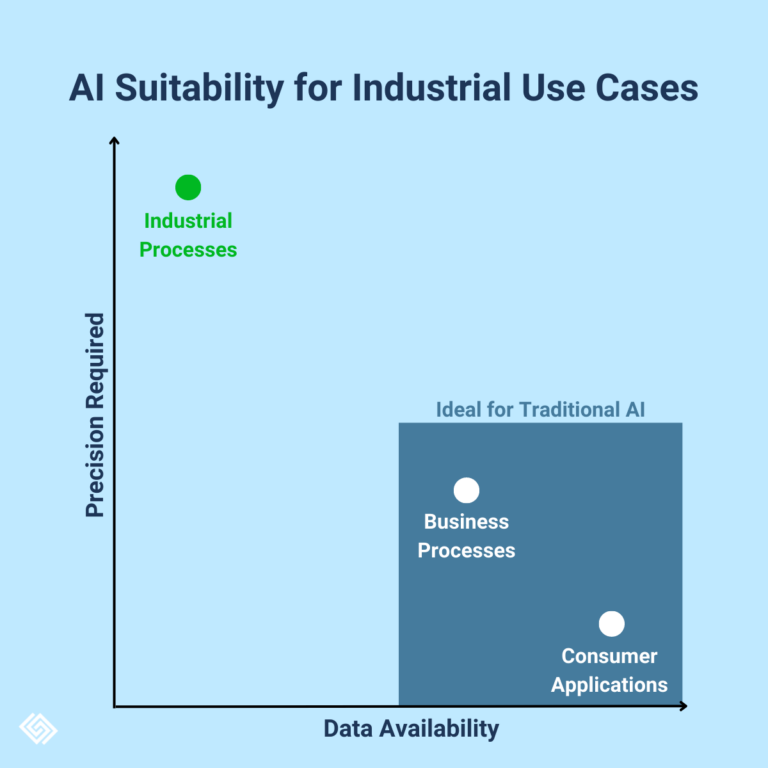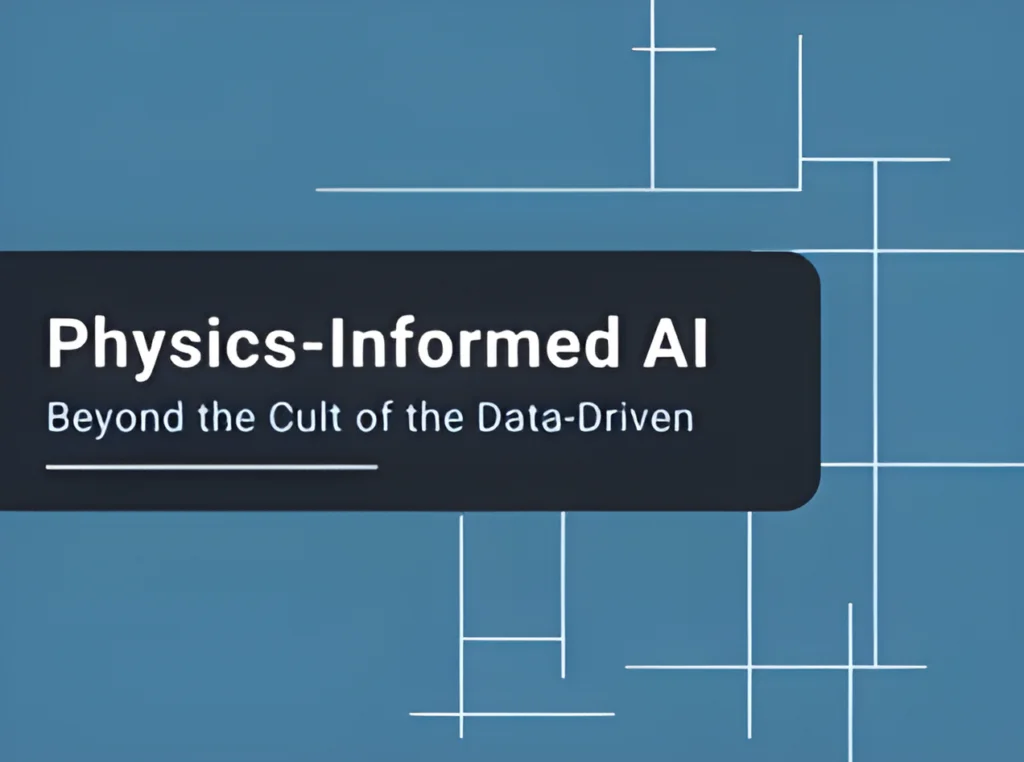The industrial world isn’t prepared for the energy transition. It struggles to balance carbon avoidance today with innovation for a carbon-free tomorrow. As the world moves towards a sustainable future, the industrial sector needs to implement solutions with increasing urgency. Many companies are turning to AI, which BCG estimates can help reduce greenhouse gas emissions by 5-10% while driving $1-$3 trillion in financial value. But today’s AI solutions are fundamentally incompatible with industrial problems.

The Promise of AI for the Energy Transition
For AI to successfully enable the energy transition, it needs to accomplish three things:
- Decarbonize and optimize today’s processes
- Scale-up disruptive net-zero technologies
- Deliver on a triple bottom line: lower costs, maximize productivity, and minimize carbon footprint
The applications for AI are almost limitless. For instance, AI can help optimize the performance of current and renewable energy systems, such as wind turbines, well networks, and solar panels. Smart grids equipped with AI algorithms can detect changes in energy demand and supply and adjust the distribution of energy accordingly. AI can also scale truly disruptive technologies such as geothermal power and green hydrogen more efficiently and with greater confidence.
Traditional Data Modeling Is Incompatible with Industrial Processes
The key to a successful energy transition is true optimization. Walking the tightrope of minimizing energy consumption while delivering maximum performance demands an AI model that is both accurate and fast – giving trusted answers to the ideal selection from millions or billions of scenarios – often in seconds or less. Two factors stand in the way:
- The precision required in industry is much higher than in typical AI use cases.
- The quantity of data needed for traditional AI to succeed either isn’t available in industrial scenarios or is too expensive to obtain.

As a result, many companies have been slow to adopt AI technologies. They are hesitant to rely on AI for critical decision-making processes and are concerned about the potential risks of relying on AI algorithms that may not be accurate or explainable.
Merging Synthetic and Real Data to Enable a True Transition
We need to bridge the gap between the digital and physical worlds. This is where synthetic data comes in. Synthetic data is computer-generated data that mimics real-world data, but can be generated at a much lower cost and higher reliability.
Geminus overcomes the challenges of data-reliant AI by uniquely and scalably integrating reliable synthetic data with real-world data using machine learning. The result is intelligent models that precisely match the behavior of real systems, without the data pain associated with traditional AI approaches. The synthetic data comes from trusted physics-based simulations – commonly used industrial tools that accurately capture the behavior of complex systems but often require long computation times. This is wrapped in a platform that repeatably outputs production-grade models, and in only days as opposed to weeks, months, or even years for data-heavy approaches.
To learn more about how AI can support the energy transition, download our whitepaper, AI for the Energy Transition.


